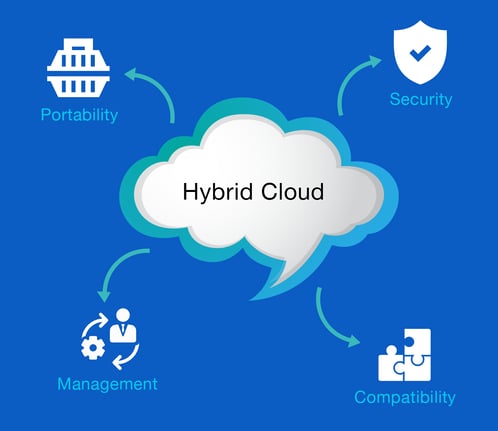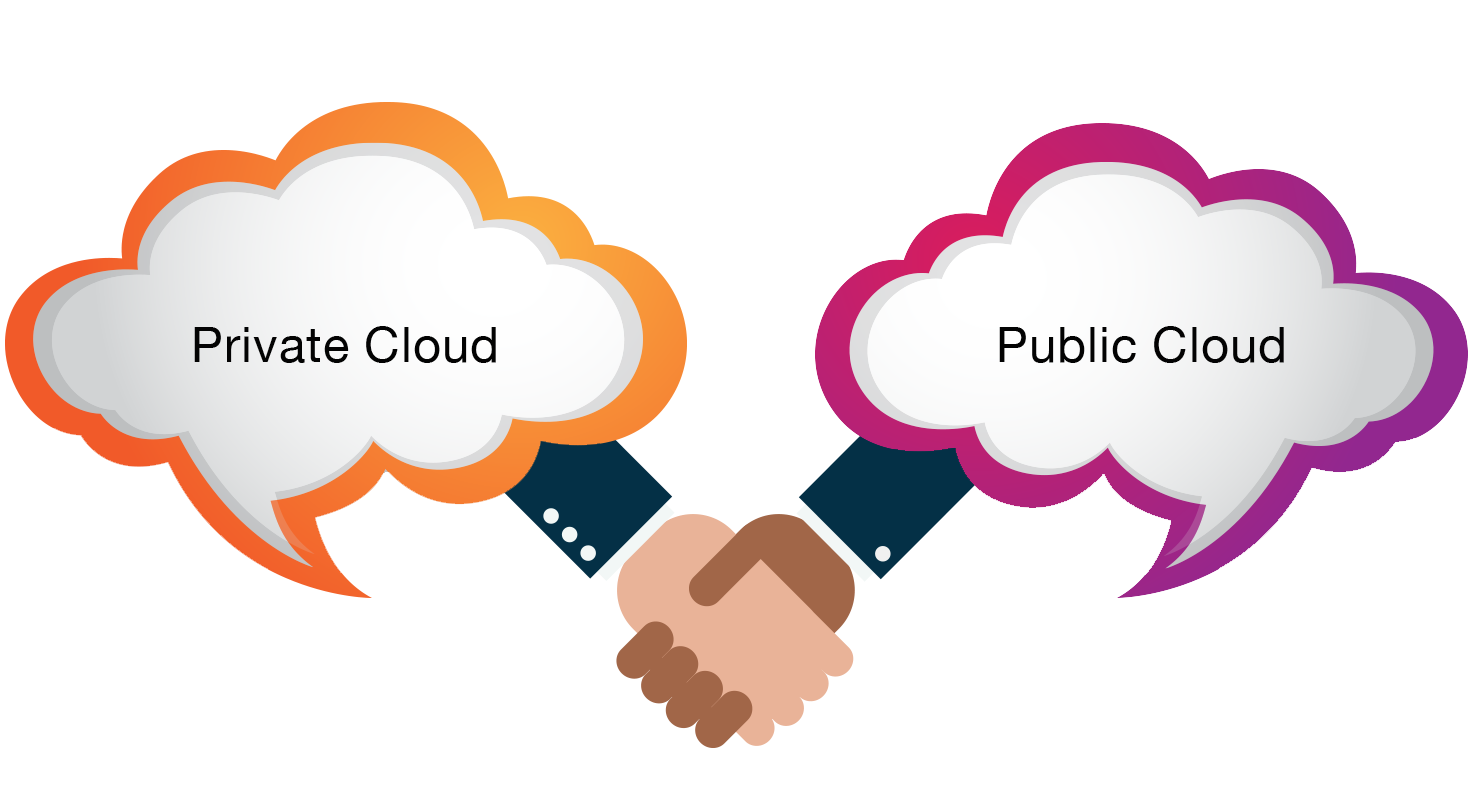How React Native is a game changer for Hybrid app development
One of the main questions that come from our customers in app development as a company is: native or hybrid app development? So far, in addition to...

Hybrid cloud has been getting a lot of attention lately. Hybrid cloud models are being adopted by numerous organizations looking to leverage the direct benefits of both a private and public cloud environment.
Cloud services are usually seen as binary options - either we are on the cloud or on-premise only. SMBs are often faced with the dilemma whether they should go for a hosted or an on-premise solution. The solution is a hybrid model. Going to the cloud requires companies to establish a balance between the use of their own infrastructure (a private cloud setup) and public cloud services. Public cloud can and should generally be used as a supplementary computing resource to existing internal resources.
A hybrid cloud offers the best of both worlds by allowing to maximize the benefits of both a hosted delivery model and those of the on-premise model. So, for organizations who want to keep some of their cloud environment private, but still use public cloud, moving to a hybrid cloud may be the right approach.
Establishing a successful hybrid cloud requires considerate planning across many dimensions.
For moving to a hybrid cloud eventually, you need to ensure when setting up your private cloud that you make it ready for hybrid cloud later - because sooner or later, your private cloud will fail and you will need to move to a hybrid cloud scenario.

Now, as you are open to both private and public cloud environments, the focus now shifts on cloud security. You need to think judiciously on which services you can allow going public. Depending on the industry and type of information stored in a public cloud, there may not be enough privacy and security.
Hybrid cloud might not always be the ideal scenario for each organization, all have different needs and business cases. Here are some scenarios perfect for a hybrid cloud implementation
With the availability of hybrid cloud-based services and the latest virtualization technology, companies can launch an intelligent business continuity and data backup plan that fits within the IT budget of a smaller business and takes the risks out of data protection.
If you have decided to move to, or are planning to test the waters for hybrid cloud, do consider these three steps:

Evaluation - understand what you are already doing in your private cloud infrastructure and what is your stack and existing infrastructure
Hir e - find a partner you can trust with the implementation. This is probably the most important step. And it makes more sense to outsource this because it gives you time to focus on your core business. The right partner will tell you the best way to move ahead.
e - find a partner you can trust with the implementation. This is probably the most important step. And it makes more sense to outsource this because it gives you time to focus on your core business. The right partner will tell you the best way to move ahead.
 Test run - This is needed to ensure the systems work as expected. We offer a low-commitment trial program and give you a test drive, so you can determine whether our services can meet your organization’s needs.
Test run - This is needed to ensure the systems work as expected. We offer a low-commitment trial program and give you a test drive, so you can determine whether our services can meet your organization’s needs.

One of the main questions that come from our customers in app development as a company is: native or hybrid app development? So far, in addition to...

